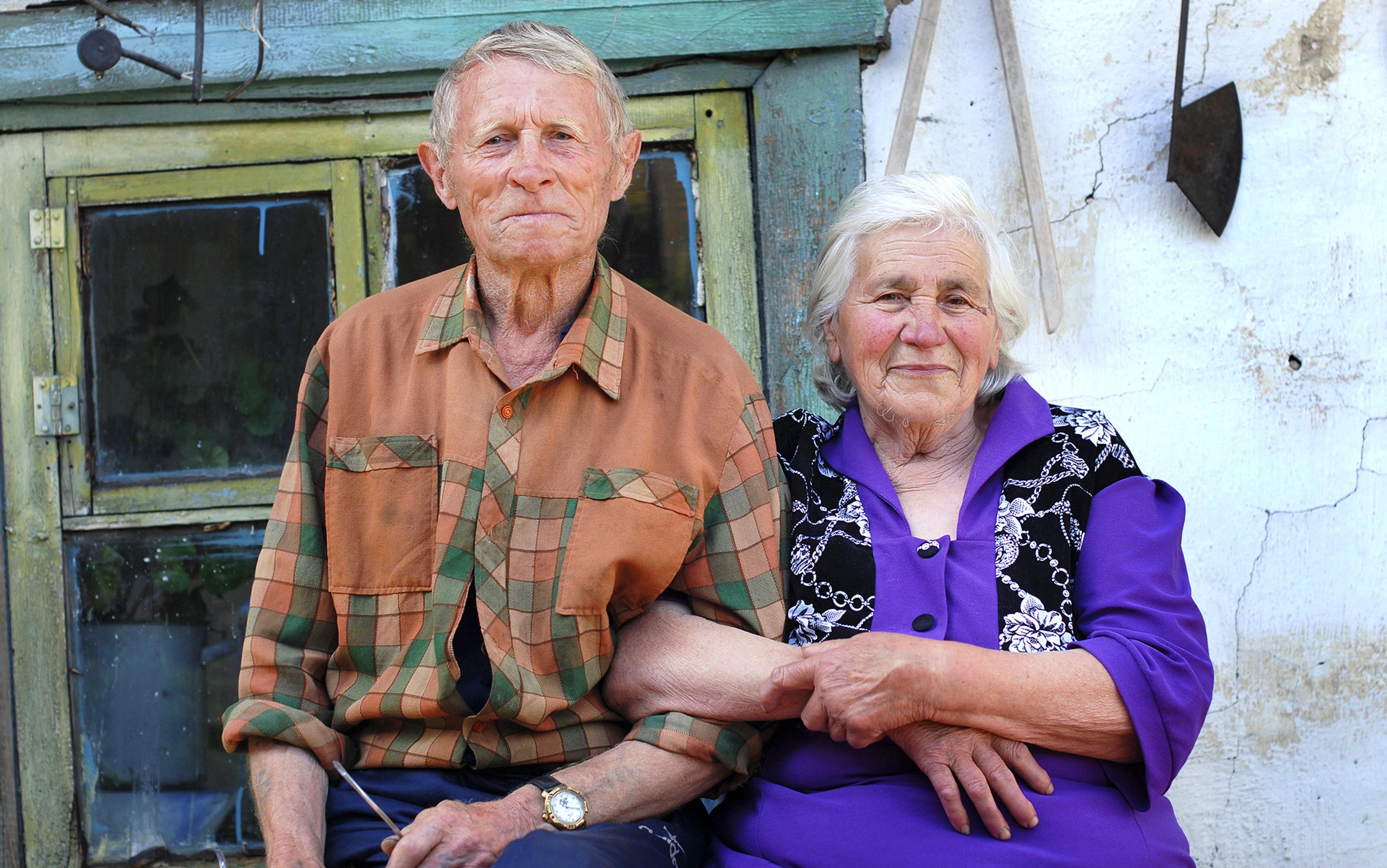Analyse a story or script, and you can break down the narrative into parts: exposition, inciting incident, rising action, conflict, climax, falling action, and resolution. Sex is much the same. Yet whether it’s a story or intercourse, we often focus our attention on the parts that bring us to climax and orgasm – the Big-O, where most of the tension lives. Magazines give advice on how to make partners orgasm or how to be better at foreplay, but we rarely talk about the part that comes afterward. It’s a shame because that falling action is, according to recent studies, where the majority of relationship satisfaction comes from.
You’ve probably heard the term ‘afterglow’, defined as the aura of satisfaction and closeness that comes after sex. It’s the feeling that makes two sweaty people want to snuggle rather than rush off to shower. Now, Amy Muise, a psychologist at York University in Canada, reports that it’s the seemingly boring pillow talk, and not so much ‘spicing things up’, that helps love last.
Muise, who studies how sexuality impacts on relationships, set out with colleagues to learn which part of sex made people feel more connected to their partners. In a study published in 2014 in the Archives of Sexual Behavior, they reported that it was what followed intercourse itself. The length of ‘post-sex affection’ ranged from zero minutes to several hours, the researchers learned. And those who spent more time snuggling were more satisfied with their relationships.
Going against what your cousin’s friend’s older brother might have once told you, Muise also found that afterglow was even more important to relationship satisfaction than the duration of foreplay or sex itself. ‘When you look at Cosmo magazine or those types of things, you hear a lot about foreplay, and spending time, and trying lots of positions. That might be somewhat important,’ she told me. But once her team added the effects of after-sex affection to their data, it completely wiped away any bump sex itself gave to relationship satisfaction.
Afterglow itself might be mostly a chemical love cocktail, and what we know about the neurological aspects of monogamous relationships comes from an unassuming rodent known as the prairie vole. These burrowing creatures live in grasslands throughout North America, have small rounded ears, and are no bigger than the palm of your hand. Yet unlike 97 per cent of all animals, they form monogamous partnerships. For more than four decades, this particular species of vole has been responsible for many major findings about why humans pair up and fall in love. It’s a happy accident that the word ‘vole’ itself is an anagram for ‘love’ – even though the prairie vole is one of the few voles that bonds with its mate.
In 1992, researchers reported that single female prairie voles placed with a male for at least 24 hours ‘exhibited a strong social preference’ for him versus a strange male – whether or not the two had mated. If the voles were placed together for fewer than 24 hours without mating, no connection was formed. The twist is that females who ‘cohabited and mated for six hours’ showed signs of attachment to that male. Like humans, prairie voles can form attachments without having sex first but getting to know each other in the biblical sense makes a relationship stronger faster.
And it all begins with a pharmacy-worth of chemicals zipping around in the brain. During sex, the brain is flooded with neurotransmitters such as dopamine, oxytocin, testosterone and vasopressin, just to name a few. Each of these chemicals plays a multitude of roles. Though dopamine is often referred to as a chemical associated with reward (and helps to make pleasurable behaviours from drug use to gambling or sex feel addictive), it plays a much more complicated role. Parkinson’s disease kills the neurons that create dopamine leading to tremors and stiffness of the limbs. Likewise, people with attention-deficit hyperactivity disorder (ADHD) often have low levels of dopamine which helps to explain the reduced motivation and inattention associated with the condition. For people who suffer from post-traumatic stress disorder (PTSD), dopamine often floods the brain during periods of anxiety. These are all a long way from love.
Sex is an accelerant, firing the neurons that release dopamine, oxytocin and other chemicals linked to pair-bonding and love
Yet many symptoms of stress – heightened alertness, sleeplessness, loss of appetite – can be almost euphoric when caused by a new romance. Given the dual nature of many of these chemicals, it is no surprise that oxytocin (sometimes thought of as the ‘cuddle hormone’) doesn’t just promote pair-bonding but can intensify memories of negative social experiences. First discovered in prairie voles, oxytocin release during sex allows couples to form a monogamous bond. When researchers cut off the flow of oxytocin, these voles behaved much the same as their non-monogamous cousins. In many ways, the chemicals associated with sex and pair-bonding tell the brain that this moment is important and worth paying attention to – for better or for worse.
As Martin Portner, a neurologist living in Brazil, wrote in Scientific American Mind in 2008, people need more than arousal to experience an orgasm: ‘It requires a release of inhibitions and control in which the brain’s centre of vigilance shuts down in males; in females, various areas of the brain involved in controlling thoughts and emotions become silent.’ Fireworks are only worth noticing when they happen on a backdrop of a dark night sky. Women’s brains tend to experience this effect more strongly than men, Portner writes. In a 2009 study in Human Brain Mapping, researchers found that genital stimulation led to deactivation in parts of the brain associated with inhibiting emotional responses. Rather than a sign that nothing is happening in the brain, this respite might be what allows partners to lower their guard after sex and allow deeper connections to form.
‘Sex is an accelerant,’ said Larry Young, a researcher at Emory University in Georgia who studies the neurobiology of social relationships (and who has worked with prairie voles for decades). He describes sex as causing a ‘firing of neurons’ that releases dopamine, oxytocin and other chemicals that we associate with pair-bonding and love. ‘If I take my wife out to a nice dinner with candles and flowers on the table, I can guarantee she’ll be releasing dopamine and oxytocin,’ he told me. The dinner-date conversation between two neuroscientists must be an eavesdrop for the ages. ‘But sex is something that really just greatly amplifies the situation.’
To learn the secrets of sex and bonding, scientists have put the relationships of prairie-vole couples under unimaginable strain. When researchers wanted to prove that prairie voles really were monogamous, they set up live traps near the animals’ habitat and repeatedly caught one couple after another. In one case, the same vole couple was captured and then captured again, still together 20 weeks later. In a study on grief, male and female voles were put together long enough to form pair bonds. Then researchers took the females away. The males became depressed. When forced to swim in water, the grieving voles struggled less and gave up more quickly. Fewer than 20 per cent of prairie voles who have lost a mate find new ones. Anyone who has been heartbroken knows this feeling well: the dreamlike absence of a partner you wish would walk back through the door; the lethargy of loss.
Without these studies, we might not know about chemicals such as oxytocin or dopamine and how their appearance during sex affects the relationship that might come afterward. Though researchers have done many studies on the body’s response to sex with the help of willing participants, it’s impossible to do controlled experiments on the neurobiology of people’s relationships. The chemistry of grief, for one, would be difficult if not impossible to study in humans. On prairie voles, we can do things such as shut off the dopamine receptors to see how this affects their pair bond, or measure levels of oxytocin before, during and after a relationship has ended. Humans are unlikely to allow their entire courtship and life with a new romantic partner to take place in a lab.
‘Monogamous animals,’ whether the prairie vole or humans, ‘have developed a system that can combine the pleasure of sex with social information about who that individual is,’ Young said. This is important. The vast majority of the animal kingdom doesn’t see sex as a social experience. Even the biggest lothario in the human world links memories of good and bad sex to the person they were sleeping with. But this is not the same as love.
The weirdness and emotional nakedness of sex reinforces the bond couples have chosen to create
While chemical processes do take place during sex or over the course of a relationship, the afterglow and love itself are vastly more complicated. As Young explains, people have long known that dopamine was involved in anything pleasurable – eating chocolate, having sex, riding rollercoasters (if you’re into that kind of thing) – yet it wasn’t until the prairie vole that researchers realised that the brain also treated the process of pair-bonding as a reward. Many researchers in this area have described sex as something that happens with the genitals, while the deeper parts of a relationship – desire, arousal, orgasm, even love – occur in the brain.
While researchers have studied the social effects of afterglow by asking participants how satisfied they are with their partners, there isn’t much, if any, research on what afterglow does to the brain. Non-monogamous animals don’t experience ‘afterglow’ nor do they spend much time thinking about their sexual partners.
The most basic aspects of the phenomenon have just recently been revealed. For instance, how long does afterglow last? A study of newlywed couples published in Psychological Science in 2017 found that the bump in sexual satisfaction ‘remained elevated for approximately 48 hours after sex’, and that spouses with a ‘stronger afterglow’ had higher overall marital satisfaction. One of the study’s authors, Andrea Meltzer at Florida State University, told me that they used newlyweds partially because ‘they have sex more frequently, and we’re more likely to capture sex in the 14-day period we’re studying them’, adding that she would expect the results to translate to any couples in long-term relationships.
The fact that the afterglow effect lasts for two days after sex doesn’t mean that all couples who want to stay together forever should schedule sex every other night. In general, couples who have more sex are more satisfied. However, a 2015 study found that when couples were given the homework of having sex twice as often as usual, it led to a slight decrease in overall happiness. This result is not a huge surprise since assigning sex equates it to advice such as ‘eat your broccoli’ or ‘go to the gym five times a week’.
As with the release of dopamine or oxytocin, this afterglow bump to relationship satisfaction appears to take place on a subconscious level. Meltzer’s study didn’t ask couples to rate how happy they were with the sex they’d had, only whether they had sex and how they felt, overall, about their relationship. ‘Colloquially, people say: “I’m happy for 30 minutes [after sex]” but there seems to be some level people aren’t quite as aware of,’ she explained.
If the true afterglow effect isn’t just the brief endorphin-laced euphoria of post-coital snuggling but a sense of lingering satisfaction that lasts for days it becomes less of a mystery why allowing afterglow to bloom after sex is ignored in favour of achieving an orgasm. Not only are the physical effects of orgasm immediate and, at least in men, hard to miss, it comes with a wave of euphoria. Saying: ‘I want to give my partner an orgasm’ is a clear and achievable goal. It’s less apparent whether the amount of time spent lingering and connecting after sex is enough to promote some nebulous concept of long-term satisfaction.
A successful relationship in humans isn’t formed through good sex alone, though it can certainly start off a relationship with a chemical bang
And, at least in humans, the afterglow effect might not be caused purely by orgasm but also by the weirdness and emotional nakedness of sex itself. ‘Sex involves some degree of vulnerability,’ Muise said. ‘[Your partner] isn’t only viewing your body but these intimate things about yourself like what you like and don’t like.’ Even in a long-term relationship, this openness can feel risky. Yet, she adds, ‘There’s a lot of opportunity there.’ Couples who are able to be naked in front of each other – emotionally and physically – feel more satisfied. Though other forms of physical affection such as handholding or a quick couch cuddle are important for the relationship, in monogamous relationships sex is a form of physical affection uniquely reserved for that couple, which serves to reinforce the bond they have chosen to create.
A successful relationship in humans, after all, isn’t formed through good sex alone, though it can certainly start off a relationship with a chemical bang. Most people who commit themselves to monogamous relationships want to get many things from their partners – support, understanding, laughter – and it’s these things that come to the forefront during the afterglow of sex. As non-monogamous animals have taught us, wanting to have sex again is not the same thing as wanting to put in the effort to make a relationship work.
On a psychological and chemical level, sexual tension and sex itself are memorable and powerful. That’s why we often linger on ‘fixing’ or rekindling the fire of our sex lives when relationships seem to be getting stale. But like a terrific book with a terrible ending, it’s what a couple walks away feeling after sex that determines how they feel about their partner – not how many orgasms they had.






